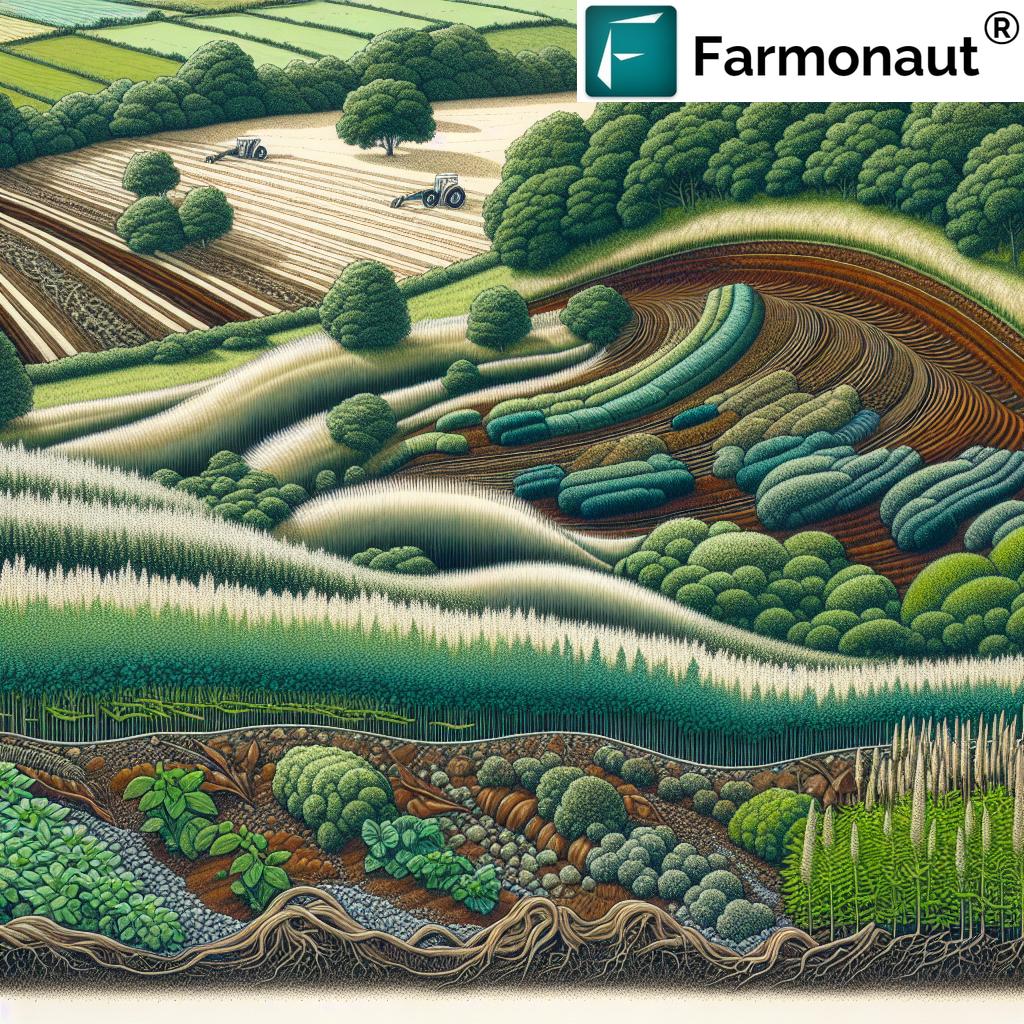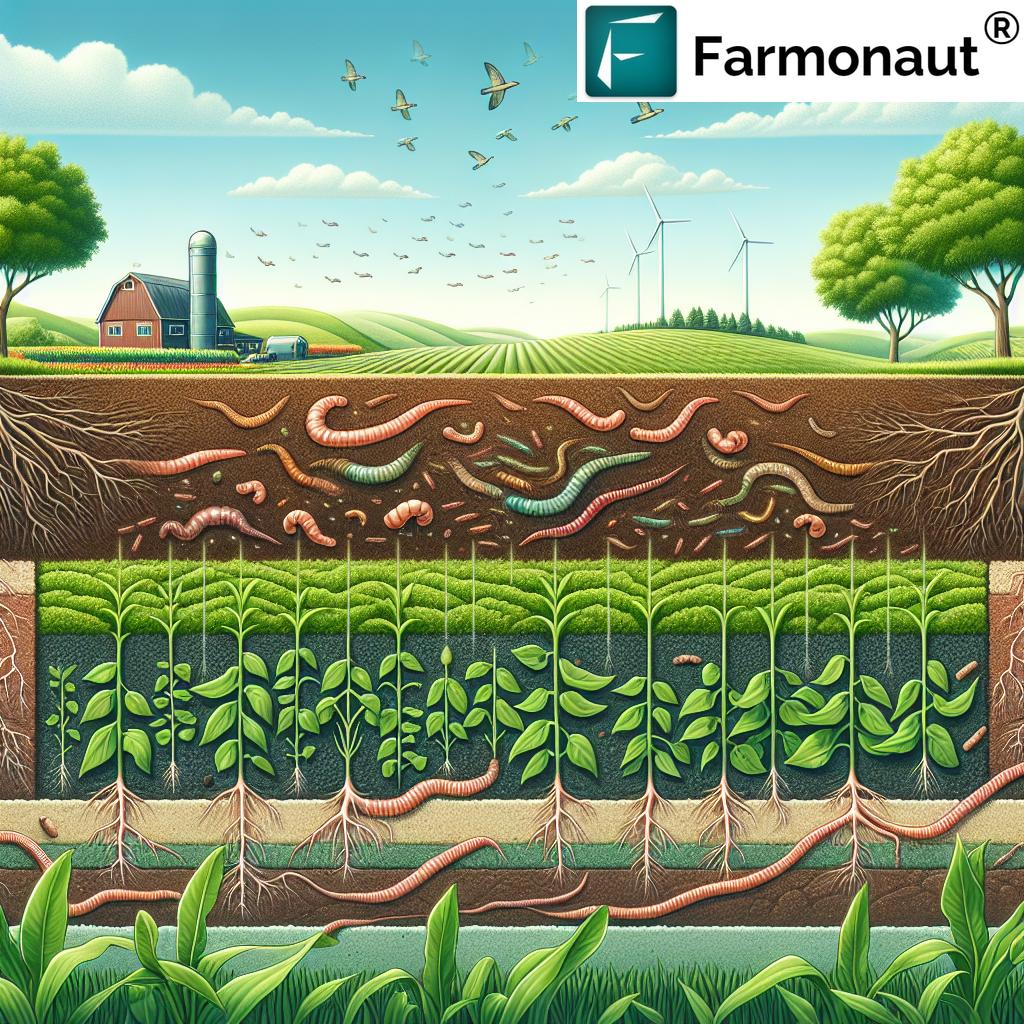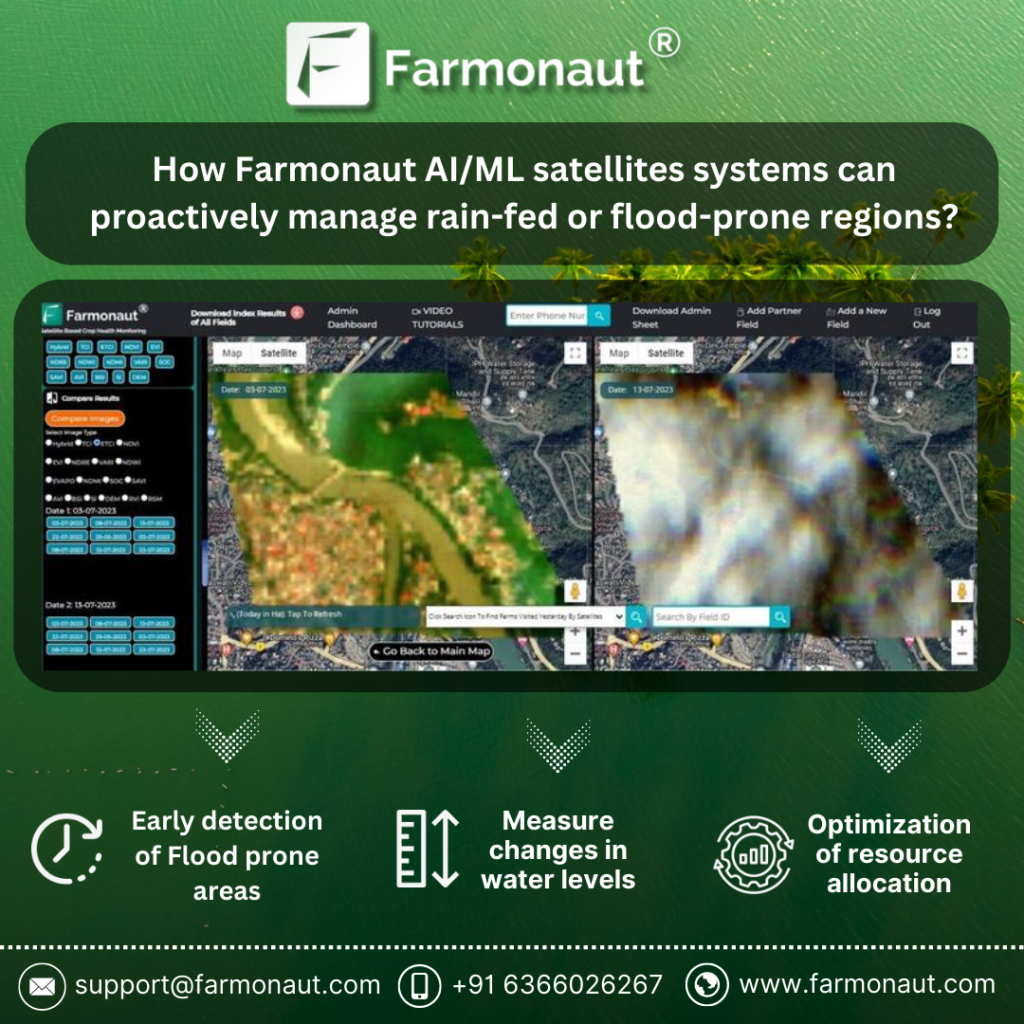Agricultural Prosperity: 7 Shocking Farming Secrets!
“Sustainable farming can increase crop yields by up to 79% in developing countries, transforming rural economies.”
Agricultural Prosperity: What Does It Really Mean?
Agricultural prosperity goes far beyond simply growing more crops or boosting farmers’ income. It describes a holistic state where our agricultural communities thrive economically, socially, and environmentally. Encompassing efficient practices, technological advancements, supportive agricultural policies, strong infrastructure, and secure market access, true prosperity is achieved when farming communities flourish in every sense.
The path to prosperity depends on how we implement sustainable agricultural practices, embrace agricultural innovation, develop resilient agricultural infrastructure, enhance market access for farmers, and build robust agriculture value chains. By focusing on both environmental stewardship and economic opportunity, we lay the groundwork for enhancing rural economies through agriculture.
7 Shocking Farming Secrets for Prosperity
- Sustainable Crop Rotation & Conservation Tillage
- Game-Changing Agroforestry Systems
- Precision Agriculture and Data-Driven Decisions
- Climate-Smart Agriculture Strategies
- Revolutionary Water Management & Irrigation
- Value Chain Strengthening & Market Access
- Embracing Agricultural Technology (AgriTech) for the Future
1. Sustainable Crop Rotation & Conservation Tillage
Let’s begin with one of the most fundamental yet underrated secrets—crop rotation coupled with conservation tillage. By systematically rotating crops and reducing the frequency and depth of soil disturbance, we dramatically maintain soil fertility, reduce erosion, boost biodiversity, and curb weed and pest outbreaks.
- Improves yields by replenishing essential nutrients naturally.
- Reduces dependency on synthetic fertilizers and pesticides.
- Enhances resilience to drought via improved soil structure and water retention.
- Supports ecological balance—making this a sustainable agricultural practice for long-term prosperity.
According to research, sustainable agricultural practices like crop rotation can improve yields by up to 25% (Wikipedia: Sustainable agriculture). Through conservation tillage, we not only reduce labor and input costs but also protect the soil carbon pool—a vital factor in climate adaptation.
2. Game-Changing Agroforestry Systems
Agroforestry is the integration of trees into cropland and pasture systems. This innovative practice brings a multitude of benefits for both our farming communities and our environment:
- Increases biodiversity by offering varied habitats for beneficial insects and wildlife.
- Improves soil health and fertility through leaf litter, shade, and root systems.
- Reduces wind and water erosion and enhances carbon sequestration.
- Provides additional income via the sale of timber, fruits, nuts, and medicinal plants — a win-win for farmers’ prosperity.
Strategic agroforestry methods can add up to 20% more yield value per hectare compared to monocropping, all while enhancing ecosystem resilience. This is why implementing sustainable agricultural practices like agroforestry is key to enhancing food security, climate adaptation, and environmental conservation.
3. Precision Agriculture and Data-Driven Decisions
If there’s one area where agricultural innovation is revolutionizing the world, it’s in precision farming—the intelligent application of data analytics, GPS, and AI-driven insights for day-to-day farm management.
- Satellite-based crop health monitoring empowers all of us to detect plant stress, disease outbreaks, and irrigation needs early through real-time spatial and imaging data.
- AI/ML models analyze environmental conditions, recommending timely interventions for optimal resource use.
- Resource management tools help optimize fertilizer, pesticide, and water application, ultimately reducing resource wastage and increasing ROI.
One of the most accessible solutions is Farmonaut, which leverages satellite technology, artificial intelligence, and machine learning to make precision agriculture affordable for farmers everywhere. Whether you’re a large-scale agribusiness, a smallholder, or a government body, Farmonaut’s tools deliver high-value, data-driven insights directly to mobile apps, web dashboards, and via robust APIs (Try Farmonaut here!).
- Track and reduce your farm’s carbon footprint with Farmonaut’s Carbon Footprinting solution, supporting sustainability and compliance.
-
Integrate Farmonaut’s satellite data into your own research or business with our accessible API.
Get started with our Developer Docs!
With platforms like Farmonaut, we can monitor crops, soils, and weather remotely, helping us improve efficiency, maximize production, and minimize environmental impacts—paving the way to true agricultural prosperity.
Download Farmonaut on your preferred platform:
4. Climate-Smart Agriculture Strategies
We cannot afford to ignore climate change—its effects are felt everywhere, from unpredictable rains to heatwaves and new pest dynamics. Climate-smart agriculture refers to systems and technologies that build resilience and adaptation into our farms. Here’s how:
- Adoption of drought-resistant crop varieties increases food security during erratic weather.
- Efficient water-use methods such as drip irrigation and mulching.
- Soil conservation techniques like contour farming and cover cropping slow runoff and protect fertility.
- Integrated agroforestry systems buffer against extreme temperatures and winds.
Smart scheduling based on high-accuracy weather forecasting and farm health insights (for example, as provided by Farmonaut’s Jeevn AI-based advisory system) enables all farmers to make proactive and climate-resilient decisions.
Applying Farmonaut’s Crop Plantation and Forest Advisory keeps you ahead, using satellite monitoring and expert AI-driven recommendations to ensure healthy crops and sustainable forests in the face of climate volatility.
“Innovative irrigation methods can reduce water usage by 50%, while maintaining or improving agricultural productivity.”
5. Revolutionary Water Management & Irrigation
Efficient water management and irrigation systems are not only about meeting today’s crop water needs—they’re vital for securing tomorrow. Poor irrigation leads to waterlogging, salinization, and massive resource loss. But incorporating drip irrigation, rainwater harvesting, and precision scheduling brings transformative advantages:
- Drastically reduces water wastage—by as much as 50% according to recent research (UNESCO 2024 Report).
- Improves fertilizer efficiency (nutrients delivered by fertigation, not washed away).
- Prevents soil degradation and salinization.
- Enhances yields, especially in semi-arid and arid regions.
Smart, satellite-based monitoring platforms like Farmonaut provide real-time soil moisture data, empowering irrigation scheduling that adapts to actual crop needs. This results in high productivity with the lowest possible resource use.
- For large operations, Farmonaut’s Large Scale Farm Management tools streamline resource use across vast areas using precision data, improving both efficiency and profitability.
6. Value Chain Strengthening & Market Access
Even with high productivity, farmers’ prosperity depends on their ability to access markets and harness the full agriculture value chain. Value addition—from processing and packaging to storage, distribution, and traceability—enables higher and stabler incomes, supporting both producers and rural economies.
- Well-developed infrastructure reduces food losses during transit and storage.
- Fair market access for farmers ensures transparent pricing and fast payments.
- Trust-building traceability solutions (like those powered by Farmonaut’s Blockchain Traceability Suite) link every stage in the supply chain, enhancing food quality and brand reputation.
- Distribution, processing, and packaging add market value and open new export opportunities.
Efforts to develop robust infrastructure—including transportation, storage facilities, and irrigation systems—are at the heart of agricultural infrastructure development and agriculture value chain development. With these, farming communities can improve access, reduce losses, and increase profitability.
7. Embracing Agricultural Technology (AgriTech) for the Future
The final shocker may seem obvious, but its impact is still underestimated: embracing AgriTech in all aspects of farm enterprise is now essential to our future prosperity.
- AI-based advisory systems, such as Farmonaut’s Jeevn AI, deliver hyper-local insights, weather forecasts, disease predictions, and personalized recommendations – all in real time.
- Blockchain for product traceability strengthens food safety, supports certifications, and unlocks global market access.
- Fleet and resource management increases operational efficiency and cuts fuel, labor, and spare-part costs (learn more about Farmonaut’s Fleet Management solution).
- Farmonaut’s subscription-based platform makes advanced monitoring and management affordable and scalable – accessible via web, Android, or iOS for everyone.
We urge all stakeholders—individual farmers, agribusinesses, governments, research organizations—to champion the adoption of such technologies, and fundamentally shift our trajectory towards sustainable abundance.
Get Started with Farmonaut Precision Agriculture
Unlock real-time satellite monitoring, AI-driven recommendations, traceability, and more. Affordable, modular plans for every need:
Comparative Benefits Table: The Impact of Each Secret
| Farming Secret / Practice | Estimated Yield Increase (%) | Estimated Cost Savings (%) | Environmental Benefit |
|---|---|---|---|
| Sustainable Crop Rotation & Conservation Tillage | 20 – 25 | 15 – 20 | Reduces erosion by 40%, improves soil fertility, increases biodiversity |
| Agroforestry Systems | 10 – 20 | 10 – 15 | Boosts carbon sequestration by up to 40%, enhances habitat diversity |
| Precision Agriculture & Data-Driven Decisions | 15 – 30 | 20 – 25 | Cuts fertilizer/pesticide use by 20%, reduces water waste |
| Climate-Smart Agriculture Strategies | 10 – 20 | 8 – 12 | Enhances resilience to extreme weather, maintains yields |
| Water Management & Efficient Irrigation | 10 – 18 | 25 – 50 | Saves up to 50% water, prevents salinization |
| Value Chain Strengthening & Market Access | 10 – 15 | 5 – 10 | Reduces post-harvest loss by 30%, supports fair pricing |
| AgriTech Adoption & Digital Farming | 12 – 25 | 20 – 40 | Monitors & reduces carbon emissions, increases traceability |
Overcoming the Key Challenges to Prosperity
While these farming secrets unlock unprecedented prosperity, we recognize several challenges facing agriculture:
- Climate Change: More unpredictable weather, droughts, and floods threaten food production. Climate-smart agriculture and crop diversification are the answer. (Explore more).
- Resource Scarcity: Limited access to water and arable land make conservation and efficient use of these resources critically important (UNESCO Report).
- Market Volatility: Price swings, trade barriers, and inadequate infrastructure can destabilize farmers’ efforts. Building local cooperatives and alternative market linkages are effective risk mitigators.
- Financial Barriers: Access to affordable financing and insurance is still lacking for many smallholders. Solutions like Farmonaut’s Satellite-verified Insurance and Crop Loan Support are transforming access for rural communities.
- Knowledge & Technology Gaps: Many communities lack extension services and technical education. More effective extension services and training are essential.
Farmonaut: Advancing Innovation and Sustainability
As we navigate these challenges, it’s clear that integrating advanced technologies such as Farmonaut’s into our farms and agribusinesses is not optional—it is essential. Here’s why:
- Precision satellite monitoring (NDVI, soil moisture, more): Early detection of stress and disease means proactive management for every farmer.
- AI-driven advisory (Jeevn): Real-time, personalized recommendations for each field, delivered to your phone or desktop.
- Blockchain-based traceability tools: Build transparent, trusted agriculture value chains for both domestic and export markets.
- Environmental reporting: Farmonaut provides real-time carbon footprint tracking to visualize and minimize your environmental impact.
- Resource management & fleet tracking: For agribusinesses and government projects, get the most from your machines and labor.
Scalable and affordable via subscription, Farmonaut removes traditional cost barriers.
Who Benefits?
- Individual farmers searching for better yields, incomes, and lower risks
- Agribusinesses seeking resource optimization and sustainability reporting
- Governments & NGOs needing to enhance food security, monitor crop area/yields for effective agricultural policy support
- Financial institutions looking to verify crops and reduce risk in agriculture lending and insurance
- Corporations aiming to prove their supply chain transparency and meet compliance needs
Essential Strategies for Enhancing Agricultural Prosperity
We must integrate the seven secrets above with broader strategic actions for lasting prosperity:
1. Diversification for Resilience & Income Stability
- Introduce new crops, rotate with cover crops, or raise livestock to buffer against price or weather shocks (Agricultural Diversification Wikipedia).
- Engage in value-added activities (food processing, agro-tourism, etc.)
2. Financial Inclusion—Empowering Growth
- Accessible credit, microfinance, and crop insurance enable farmers to invest in technology and better inputs.
- Satellite-based farm verification (as enabled by Farmonaut) simplifies loan and insurance approval—reducing fraud risk and financial barriers.
3. Research and Development
- Continuous investment in R&D for developing improved crop varieties, pest controls, and sustainable practices is non-negotiable for the future of food security.
- Collaboration across public and private sectors accelerates innovation and impact.
4. Education & Extension Services
- Effective extension services connect research, proven methods, and new technologies directly to farmers.
- Ongoing technical education and digital literacy empower rural communities to thrive in data-driven, tech-powered agricultural economies.
5. Climate Adaptation
- Adopt climate-smart crops and techniques, improve soil and water conservation, and monitor impact using platforms like Farmonaut for sustainable growth under variable conditions.
6. Policy Support
- Governments must develop supportive agricultural policies: reasonable subsidies, market price stability, research funding, and streamlined access to land, water, and markets.
- Incentivize adoption of sustainable methods, infrastructure upgrades, and innovative agri-technologies at every level of the value chain.
7. Infrastructure Development—The Foundation of Prosperity
- Build and upgrade transportation networks, storage facilities, irrigation systems, and digital connectivity.
- This reduces post-harvest losses, shortens supply chains, and increases rural employment and incomes.
FAQ: Your Top Questions Answered
-
Q: How do sustainable agricultural practices improve yields?
Sustainable practices like crop rotation, conservation tillage, and agroforestry restore soil fertility, reduce erosion, and enhance biodiversity. This leads to more resilient crops and consistently higher yields without depleting resources. -
Q: What technologies are most effective for increasing farming efficiency?
Precision farming tools such as satellite-based crop monitoring, AI-based advisory systems, and blockchain traceability solutions allow farmers to make data-driven decisions, optimize resource use, and increase productivity. -
Q: How does Farmonaut support rural communities and economies?
By providing affordable, real-time crop health and soil monitoring, weather forecasts, and transparent supply chain tools, Farmonaut enables both small and large farmers to boost productivity, reduce input costs, and tap into new markets. -
Q: What are value chains, and why are they important?
The agriculture value chain encompasses the full journey from field to market—including processing, packaging, storage, and distribution. Strengthening each link boosts farmer profits and food system resilience. -
Q: Why is infrastructure development considered a cornerstone of agricultural prosperity?
Efficient infrastructure—roads, storage, irrigation, digital connectivity—reduces losses, speeds up the supply chain, and ensures timely access to markets and services. -
Q: How can I get started with satellite-based farm management?
Simply download the Farmonaut app for Web, Android, or iOS. You’ll get real-time field data, AI-backed recommendations, and customizable solutions for all farm sizes. -
Q: Where can I learn more or ask for technical help?
Visit Farmonaut’s official platform or access our API Documentation for developer and enterprise support.
Conclusion: A Prosperous Path Forward
Agricultural prosperity is not an accident—it is the outcome of deliberate choices and collective action. By implementing sustainable practices, embracing agricultural innovation, investing in infrastructure, and supporting robust market access for farmers, we can enable our farming communities to thrive.
Solutions like Farmonaut democratize access to powerful tools, bringing data-driven, precision agriculture and transparency to the forefront. As we continue to build strong agriculture value chains and adopt smart strategies for climate adaptation and technological advancement, we set the stage for enhancing rural economies through agriculture.
Let us all—farmers, communities, businesses, and policymakers—commit to a future where agriculture is at the heart of prosperity, resilience, and sustainability for generations to come.
















